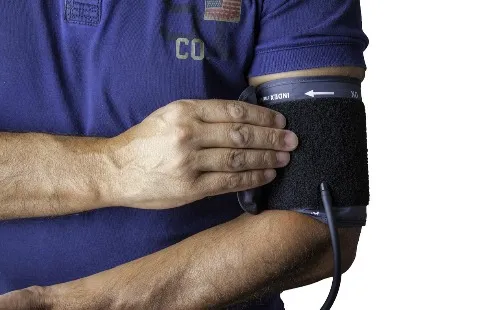
New to Germany? Avoid These Common Health Insurance Mistakes
Section: Health Insurance
Research points to the dangers of a popular sport practice.
Seeing head to head collisions in sports is always unsettling, and efforts are currently being made to raise awareness of the dangers associated with head injuries in contact sports such as rugby and American Football. Take heading in football, for example. It is not only part of the game, but also a prominent goal scoring and passing technique that rarely leads to injury.
Now, new research led by Dr. Inga Koerte, from Ludwig Maximilian University in Munich, studied the brain of 12 elite soccer players, and found that heading may cause potentially dangerous changes in a player's brain. As Dr Koerte explains,
"We studied soccer players using sophisticated Magnetic Resonance imaging (MRI) known as diffusion tensor imaging because we wanted to know if we would see changes in the brains of athletes who experience frequent sub-concussive blows to the head but who had not experienced a concussion".
Diffusion Tensor Imaging is a sensitive MRI technique that allows scientists to measure the diffusion of water in tissues. The resulting images enable the study of the structure, organization and density of the tissue. In this study, scans showed clear changes in the brain, which were subtle but similar to changes seen in patients with mild traumatic brain injury.
"White matter changes were predominantly located in the frontal lobes and temporo-occipital lobes. These brain regions are known to be responsible for attention, memory, executive functioning and higher-order visual functions", said Dr Koerte.
White matter is one of the two components of the central nervous system. It is characterized by having high concentrations of the projecting fibers that transmit signals between nerve cells, and it co-ordinates communication between different brain regions.
The professional soccer players were selected from U19 and U23 squads of elite clubs in Germany. They consisted of a mix of playing positions, such as defense, midfield and attack. As a control, this group was compared to competitive level swimmers (a sport not known for repeated head trauma), which were matched by age, sex and handedness. Widespread differences between the two groups were found with extensive alterations in the brains of the soccer players relative to those of the swimmers.
So what do these results tell us? Co-author, Dr Martha Shenton of Brigham and Women's hospital, explains
"It is not clear how this damage arises, recurrent minor shocks, like those that a player experiences when heading the ball, are one possible cause. More work will be needed to clarify the effects of these brain lesions on cognitive performance."
"What's new is that our data for the first time show subtle changes in the brain's white matter architecture in athletes who did not experience a concussion but frequent subconcussive blows to their heads while playing soccer....While we don't yet know what these changes mean, soccer players should be aware that they may be putting themselves at some risk for developing brain injuries" says Dr Koerte.
While the research does not suggest that soccer is implicitly dangerous for the brain, it does raise a red flag, and has important implications. For example, youth coaching policy may need re-evaluating, as children may be more vulnerable to these effects. Studies evaluating their potential clinical impact should be encouraged. In other instances, legislation has been put in place to limit overuse injuries in youth sport. One example is the daily pitch limit in children's baseball in USA. Here, research has led to changes in policy and depending on age group, youth baseball players are now limited to a certain number of pitches per day in order to protect their arms and prevent injury from overuse.
For more information, please vitis: http://www.en.uni-muenchen.de/news/newsarchiv/2012/2012_koerte.html

Section: Health Insurance

Section: Health

Section: News

Section: Arts

Section: Arts

Section: Politics

Section: Politics

Section: News

Section: Politics

Section: Health Insurance
Health Insurance in Germany is compulsory and sometimes complicated, not to mention expensive. As an expat, you are required to navigate this landscape within weeks of arriving, so check our FAQ on PKV. For our guide on resources and access to agents who can give you a competitive quote, try our PKV Cost comparison tool.
Germany is famous for its medical expertise and extensive number of hospitals and clinics. See this comprehensive directory of hospitals and clinics across the country, complete with links to their websites, addresses, contact info, and specializations/services.
Offene Wunde is a documentary theater piece about the attack at the Olympia Einkaufszentrum (OEZ) by Tunay Önder and Christine Umpfenbach. On July 22, 2016, a perpetrator motivated by racism killed nine young people from Munich: Armela, Can, Dijamant, Guiliano, Hüseyin, Roberto, Sabine, Selçuk,...



No comments yet. Be the first to comment!